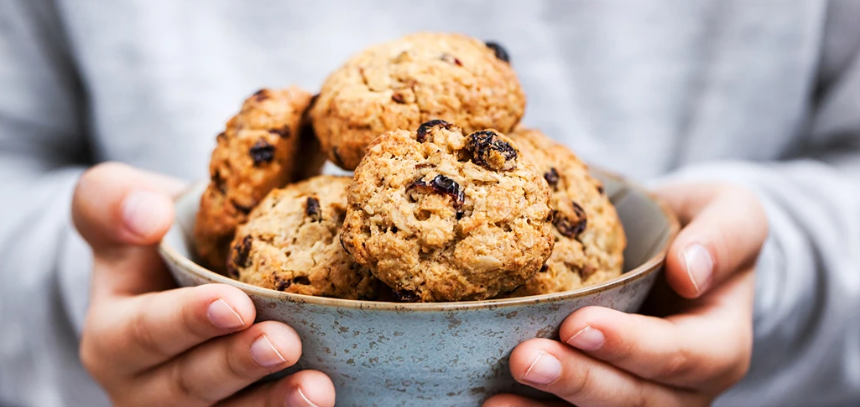Ypsomed, CamDiab launch first automated insulin dosing system with Abbott FreeStyle Libre 3 was reported by Sean Whooley for DrugDeliveryBusiness.com, 28 November 2022.
 Ypsomed announced that its mylife Loop now has authorization to work with the Abbott FreeStyle Libre 3 sensor in Germany. Abbott, Ypsomed, and CamDiab announced a partnership to develop an AID earlier this year. They seek to develop and commercialize the integrated AID system with an initial focus in European countries.
Ypsomed announced that its mylife Loop now has authorization to work with the Abbott FreeStyle Libre 3 sensor in Germany. Abbott, Ypsomed, and CamDiab announced a partnership to develop an AID earlier this year. They seek to develop and commercialize the integrated AID system with an initial focus in European countries.
The Ypsomed mylife YpsoPump combines with the CamDiab mylife CamAPS FX algorithm and FreeStyle Libre 3. Together, they form an intelligent and automated insulin delivery (AID) system for people with type 1 diabetes. Users can better control glucose levels and alleviate the burden of daily diabetes management.
Ypsomed already launched mylife Loop in partnership with CamDiab this past summer in a number of countries. Enabling the Abbott FreeStyle Libre 3 CGM to work with the platform gives type 1 diabetes patients options. They can choose between the Dexcom G6 and Abbott FreeStyle Libre 3 and they can customize their loop.
“We are convinced that the major challenges facing society can only be solved through partnerships. We are therefore proud to expand our offering with Abbott to give the users of our mylife YpsoPump more freedom of choice in managing their diabetes,” said Sébastien Delarive, chief business officer of Diabetes Care, Ypsomed. “Our compact and easy-to-use insulin pump authorized to work with Abbott’s latest sensor and CamDiab’s adaptive hybrid closed-loop app will change the lives of thousands of people affected by diabetes.”
Read more: Ypsomed, CamDiab launch first automated insulin dosing system with Abbott FreeStyle Libre 3
Insulin resistance, hyperinsulinemia primary drivers of atherosclerotic CVD was written by Regina Schaffer for Healio.com/endocrinology, 1 December 2022.
 Underlying insulin resistance and hyperinsulinemia work together as “bad actors” to drive atherosclerotic CVD long before a person is diagnosed with diabetes, and early treatment is needed to slow the process. “What really kills our [diabetes] patients are microvascular complications, like heart attacks and strokes,” Ralph A. DeFronzo, MD, professor of medicine and chief of the diabetes division at the University of Texas Health Science Center at San Antonio, said during a presentation at the World Congress on Insulin Resistance, Diabetes & Cardiovascular Disease. “This accounts for 80% of the mortality in our diabetic patients.”
Underlying insulin resistance and hyperinsulinemia work together as “bad actors” to drive atherosclerotic CVD long before a person is diagnosed with diabetes, and early treatment is needed to slow the process. “What really kills our [diabetes] patients are microvascular complications, like heart attacks and strokes,” Ralph A. DeFronzo, MD, professor of medicine and chief of the diabetes division at the University of Texas Health Science Center at San Antonio, said during a presentation at the World Congress on Insulin Resistance, Diabetes & Cardiovascular Disease. “This accounts for 80% of the mortality in our diabetic patients.”
Obesity, diabetes, hypertension, and dyslipidemia are individually major independent risk factors for CVD. However, the underlying insulin resistance, as well as the compensatory hyperinsulinemia, play a “critical role” in directly promoting the atherogenic process, DeFronzo said.
Read more: Insulin resistance, hyperinsulinemia primary drivers of atherosclerotic CVD
Insulin resistance doubles risk of major depressive disorder, Stanford study finds and reported by Bruce Goldman for Stanford.edu/news, 22 September 2021.
Stanford Medicine scientists have linked insulin resistance to an increased risk of developing major depressive disorder. “If you’re insulin-resistant, your risk of developing major depressive disorder is double that of someone who’s not insulin-resistant, even if you’ve never experienced depression before,” said Natalie Rasgon, MD, PhD, professor of psychiatry and behavioral sciences.
 Upward of 1 in 5 Americans experience major depressive disorder sometime during their lives. Some factors contributing to this deeply debilitating disease are things we can’t prevent. But insulin resistance is preventable: It can be reduced or eliminated by diet, exercise and, if need be, drugs.
Upward of 1 in 5 Americans experience major depressive disorder sometime during their lives. Some factors contributing to this deeply debilitating disease are things we can’t prevent. But insulin resistance is preventable: It can be reduced or eliminated by diet, exercise and, if need be, drugs.
The researchers’ findings are described in a study published online on Sept. 22, 2021, in the American Journal of Psychiatry. Rasgon shares senior authorship of the study with Brenda Penninx, MD, PhD, professor of psychiatric epidemiology at the University of Amsterdam Medical Center. The study’s lead author is Kathleen Watson, PhD, a postdoctoral scholar in Rasgon’s group.
Studies have confirmed that at least 1 in 3 of us is walking around with insulin resistance — often without knowing it. The condition does not arise from a deficiency in the pancreas’s ability to secrete insulin into the bloodstream, as occurs in Type 1 diabetes, but because of the decreased ability of cells throughout the body to heed this hormone’s command.
Insulin’s job is to tell our cells it’s time for them to process the glucose that’s flooding our blood due to our dietary intake of it, its manufacture in our liver, or both. Every cell in the body uses glucose as fuel, and each of those cells has receptors on its surface that, on binding to insulin, signal the cell to ingest the precious energy source. But an increasing proportion of the world’s population is insulin-resistant.
Read more: Insulin resistance doubles risk of major depressive disorder
Phone app successfully predicts heart failure through speech was shared by Naama Barak for Israel21c.org, 27 November 2022. From a person’s voice, the HearO app can detect fluid accumulation in the lungs that could lead to heart failure.
 Speech-processing startup Cordio Medical announced that its HearO app successfully predicted 82 percent of first congestive heart failure cases in patients that took part in a study, on average 18 days before the incident occurred.
Speech-processing startup Cordio Medical announced that its HearO app successfully predicted 82 percent of first congestive heart failure cases in patients that took part in a study, on average 18 days before the incident occurred.
The study collected 460,000 voice samples from 180 patients across 10 medical centers in Israel. The participants used the HearO app at home and sent a voice sample once a day in Hebrew, Arabic, or Russian. The company reported an 82% success rate, noting that a third of the 18% misdiagnosis rate was related to sounds from other respiratory diseases. Congestive heart failure takes place when the heart doesn’t properly pump blood, which in turn can lead to fluid accumulation in the lungs. The HearO system detects that buildup in a person’s speech, alerting of future heart failure.
The company recently completed an $18 million fundraising round and has received approval from Israel’s Health Ministry and CE approval from the European Union. It expects to receive FDA approval at the end of 2023 and plans to enter the United States market in 2024.
Read more: Phone app successfully predicts heart failure through speech
Why are biscuits so addictive? was published by Dr. Emma Davies for ScienceFocus.com, 3 October 2022. As people living with diabetes and watching/counting carbs, why do we want that second (and third) biscuit?
 Sweet, fatty biscuits trigger our brain’s reward circuit, flooding it with dopamine and making us feel good. We also tend to find crunchy foods satisfying to eat, from a sensory perspective. So, it’s easy to see why we soon reach for another biscuit seconds after the first. But that’s not to say that biscuits are actually physically addictive. A bare biscuit tin may deliver disappointment but does not cause withdrawal symptoms.
Sweet, fatty biscuits trigger our brain’s reward circuit, flooding it with dopamine and making us feel good. We also tend to find crunchy foods satisfying to eat, from a sensory perspective. So, it’s easy to see why we soon reach for another biscuit seconds after the first. But that’s not to say that biscuits are actually physically addictive. A bare biscuit tin may deliver disappointment but does not cause withdrawal symptoms.
The concept of food addiction remains controversial after many years of debate in scientific journals. However, a German study on mice in 2021 found that females were more likely to consume excessive amounts of sugar than males. Do women eat more biscuits than men? We will probably never know.
Grilled Feta With Nuts was posted by Ali Slagle for NYTimes/cooking.com,
This sounds DELICIOUS and LOW CARB!!! If you do try this, please let me know your thoughts, any tips you discover, or any other great and easy recipes. Please share below in the comment section for everyone to try!
 This skillet of warmed feta and nuts can tide guests over before dinner or embellish a meal of grilled lamb kebabs, mixed vegetables, pork or chicken. Inspired by saganaki, a fried-cheese appetizer from Greece, the feta here is surrounded by nuts, olive oil, honey and herbs. Thyme, oregano or za’atar adds earthiness to the salty feta and sweet honey, but you could incorporate orange or lemon peel, fresh or dried chile, or any other aromatics you like on spiced nuts. You could also trade the nuts for tomatoes, dates, salami or olives. Whatever you do, be sure to drizzle the herbed honey and oil over each spoonful of feta.
This skillet of warmed feta and nuts can tide guests over before dinner or embellish a meal of grilled lamb kebabs, mixed vegetables, pork or chicken. Inspired by saganaki, a fried-cheese appetizer from Greece, the feta here is surrounded by nuts, olive oil, honey and herbs. Thyme, oregano or za’atar adds earthiness to the salty feta and sweet honey, but you could incorporate orange or lemon peel, fresh or dried chile, or any other aromatics you like on spiced nuts. You could also trade the nuts for tomatoes, dates, salami or olives. Whatever you do, be sure to drizzle the herbed honey and oil over each spoonful of feta. ![]() Cows on farms could soon have their health, reproductive readiness and location monitored by smart technology powered by the kinetic energy of the animal’s movements. Devices that monitor the health of each cow or keep them within invisible fences are already used on farms but these smart tools are often powered by chemical batteries, which add to the energy used by an emissions-intensive industry. researchers from China writing in the journal iScience have designed a wearable smart device for cows that captures the kinetic energy created by their smallest movements.
Cows on farms could soon have their health, reproductive readiness and location monitored by smart technology powered by the kinetic energy of the animal’s movements. Devices that monitor the health of each cow or keep them within invisible fences are already used on farms but these smart tools are often powered by chemical batteries, which add to the energy used by an emissions-intensive industry. researchers from China writing in the journal iScience have designed a wearable smart device for cows that captures the kinetic energy created by their smallest movements.


Ahh darn I just got a beef sensor in my steak?
That thing about the biscuits? Its the smell. Lord have mercy its the smell that drives me nuts. Yumm.